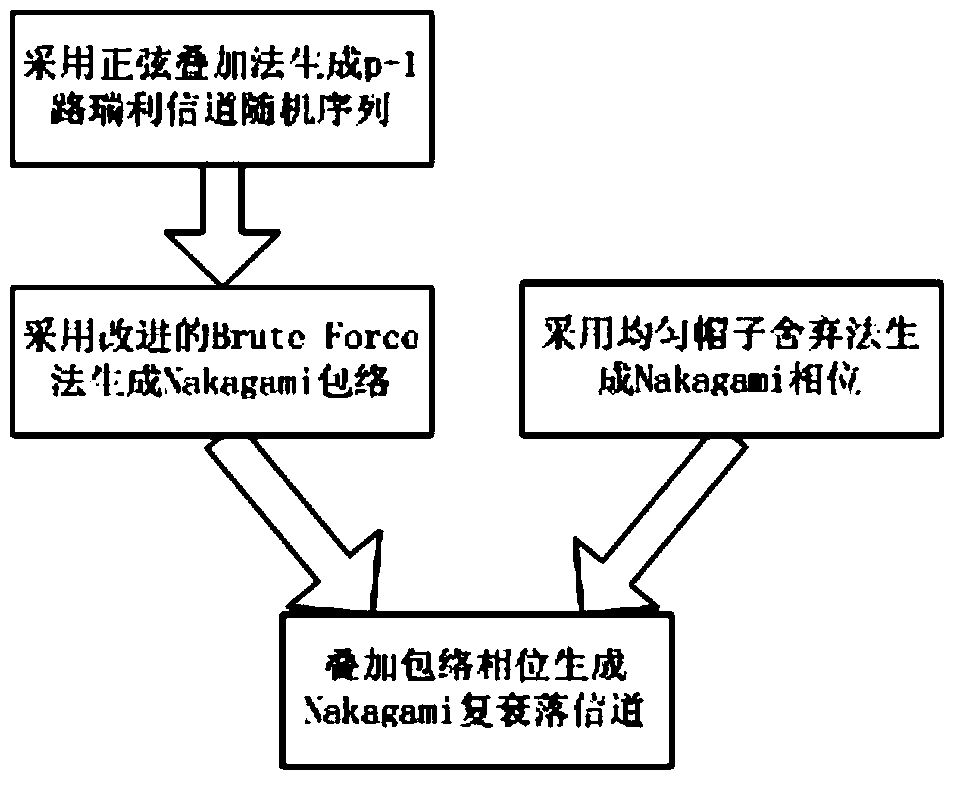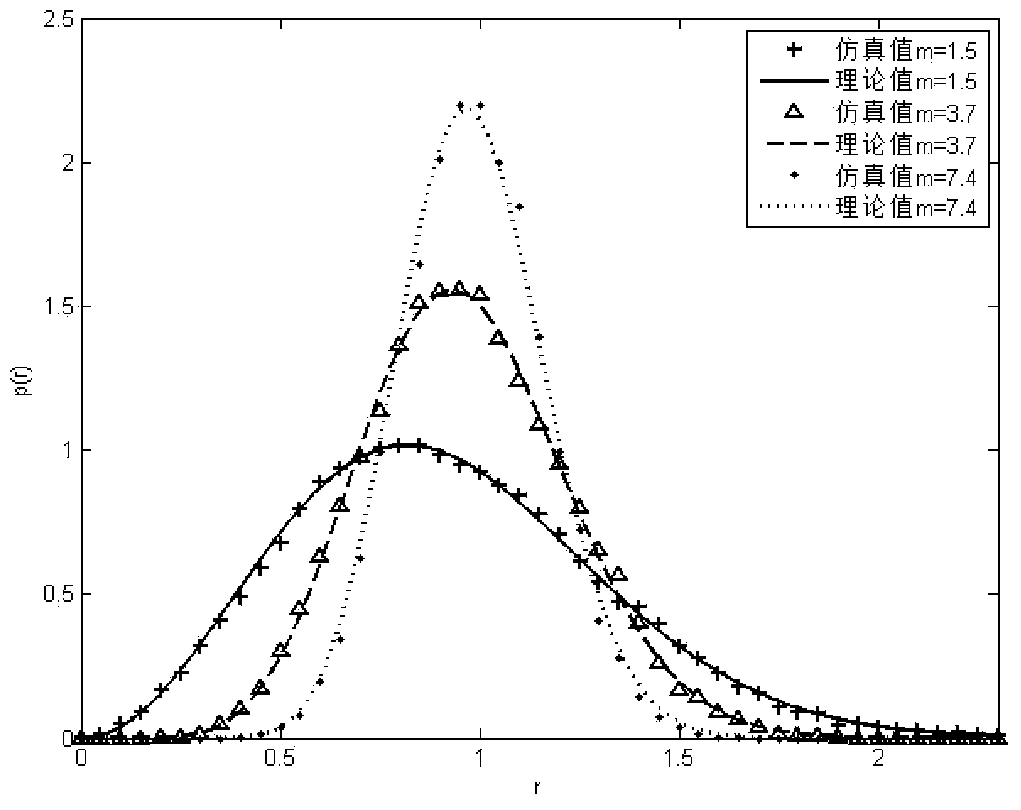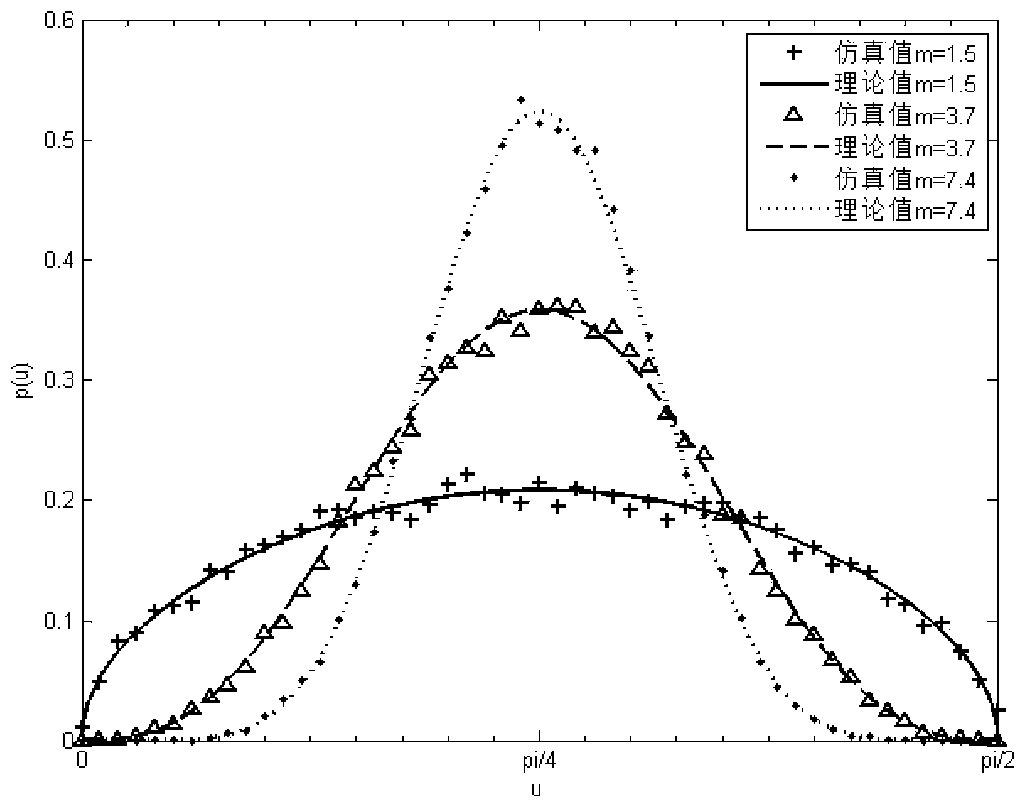Method for modeling Nakagami repeated fading channel
A channel modeling and complex fading technology, which is applied in transmission monitoring, electrical components, transmission systems, etc., can solve the problems that the first-order channel characteristics and second-order channel characteristics cannot be obtained at the same time, and the Doppler effect is not considered.
- Summary
- Abstract
- Description
- Claims
- Application Information
AI Technical Summary
Problems solved by technology
Method used
Image
Examples
Embodiment Construction
[0063] Please refer to figure 1 , a kind of Nakagami complex fading channel modeling method of the present invention, it comprises the following steps:
[0064] S1 adopts sinusoidal superposition method to generate length N=10 6 The p+1 Rayleigh channel random sequence;
[0065] S1.1 Calculate the Doppler coefficient c i,n , discrete Doppler frequency f i,n and Doppler phase θ i,n :
[0066] c i , n = 2 σ 0 N i - 1 2 sin ( nπ ...
PUM
 Login to View More
Login to View More Abstract
Description
Claims
Application Information
 Login to View More
Login to View More - R&D
- Intellectual Property
- Life Sciences
- Materials
- Tech Scout
- Unparalleled Data Quality
- Higher Quality Content
- 60% Fewer Hallucinations
Browse by: Latest US Patents, China's latest patents, Technical Efficacy Thesaurus, Application Domain, Technology Topic, Popular Technical Reports.
© 2025 PatSnap. All rights reserved.Legal|Privacy policy|Modern Slavery Act Transparency Statement|Sitemap|About US| Contact US: help@patsnap.com



